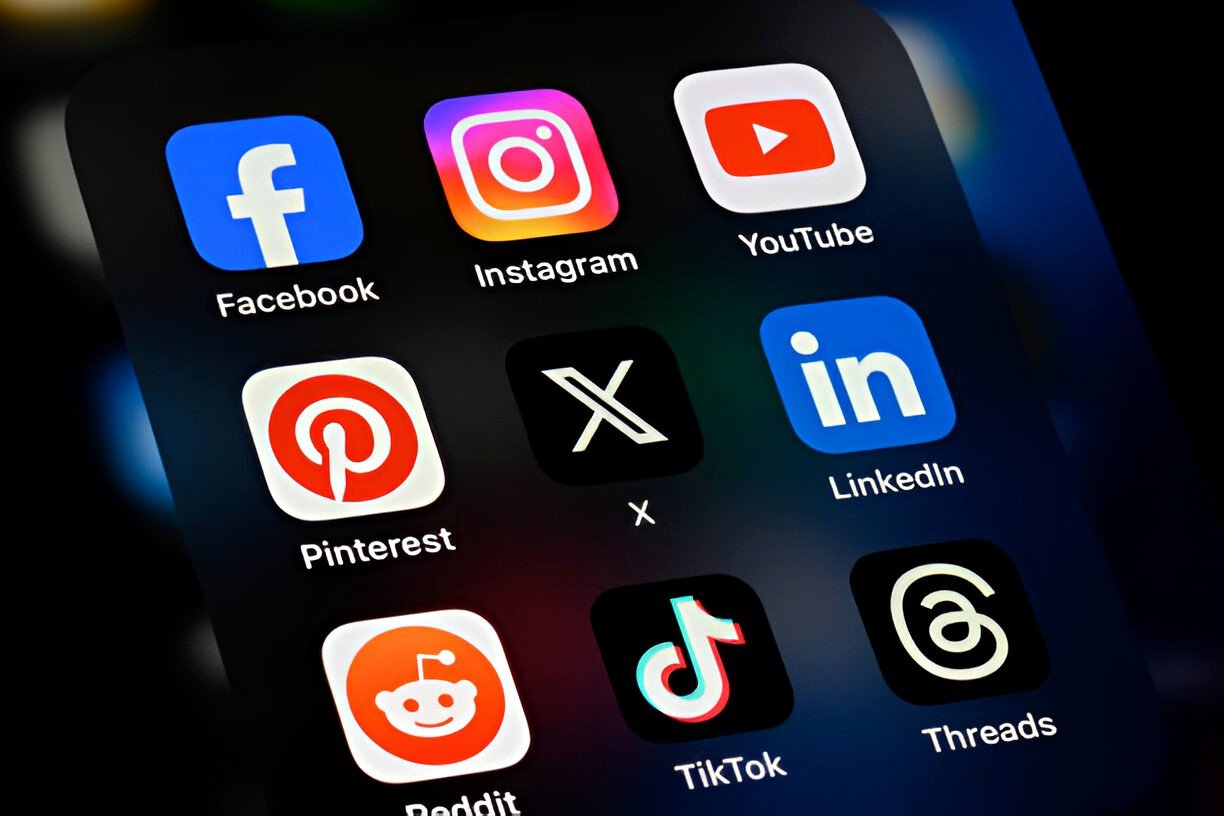How to Build an Effective Content Distribution Strategy: 10 Easy Steps
By effectively distributing your content, you can increase brand awareness, drive website traffic, generate leads, and boost engagement.

A content distribution strategy is essential for ensuring that your content reaches the right audience and achieves its intended goals.
By effectively distributing your content, you can increase brand awareness, drive website traffic, generate leads, and boost engagement.
Below is a detailed guide on how to create a robust content distribution strategy in 10 easy steps.
What is a Content Distribution Strategy?
A content distribution strategy is a plan that outlines how, where, and when you will share your content with your target audience.
It involves selecting the appropriate channels, timing, and methods to distribute content in a way that maximizes reach, engagement, and conversion.
The strategy also includes measuring the success of these efforts to make data-driven adjustments for continuous improvement.
1. Define Your Goals
The first step in creating an effective content distribution strategy is to define clear and measurable goals. Ask yourself what you want to achieve with your content distribution efforts. Common goals include:
- Increasing Brand Awareness: Expanding your brand’s visibility to a larger audience.
- Driving Website Traffic: Bringing more visitors to your website through various channels.
- Generating Leads: Capturing potential customers’ information through content.
- Boosting Engagement: Encouraging interactions such as likes, comments, shares, and clicks.
Having well-defined goals will guide your content distribution strategy and help you measure its success.
2. Identify Your Target Audience
Understanding your target audience is crucial for effective content distribution. You need to know who your content is for so you can tailor it to their needs and preferences. To identify your target audience:
- Create Buyer Personas: Develop detailed profiles of your ideal customers, including their demographics, interests, challenges, and online behavior.
- Research Audience Preferences: Understand what types of content your audience prefers and where they spend their time online.
- Analyse Competitors: Look at who your competitors are targeting and how they are engaging with their audience.
Knowing your audience helps you choose the right content formats and distribution channels.
3. Choose the Right Content Formats

Different types of content resonate differently with your audience. To maximise your reach and effectiveness, it’s important to choose the right content formats that align with your goals and audience preferences:
- Blog Posts: Ideal for detailed explanations, tutorials, and thought leadership.
- Videos: Highly engaging and easily shareable, especially on social media platforms like YouTube and Instagram.
- Infographics: Great for presenting complex information in a visually appealing way.
- Podcasts: Suitable for reaching audiences who prefer listening to content while on the go.
- E-books and Whitepapers: In-depth content that is often gated for lead generation.
Using a variety of content formats allows you to reach different segments of your audience and cater to their content consumption habits.
Related: Content Marketing Strategy Checklist: Your Ultimate Guide
4. Select the Right Distribution Channels

Choosing the right channels for distributing your content is critical to its success. Your distribution channels should align with where your target audience spends their time. Consider the following channels:
- Social Media: Platforms like Facebook, Twitter, LinkedIn, and Instagram are great for engaging with a wide audience.
- Email Newsletters: A direct way to reach your subscribers with personalised content.
- Content Syndication: Platforms like Medium, Outbrain, or Taboola can help you reach a broader audience by republishing your content.
- Paid Advertising: Pay-per-click (PPC) campaigns on Google Ads or social media ads can target specific demographics and expand your reach.
- Industry Forums and Communities: Engage with niche audiences on platforms like Reddit, Quora, or industry-specific forums.
Selecting the right channels ensures that your content reaches the people who are most likely to engage with it.
5. Develop a Content Calendar
A content calendar is a tool that helps you plan and schedule your content distribution activities. It ensures a consistent flow of content and helps you manage your resources effectively. To create a content calendar:
- Identify Key Dates: Align your content with relevant industry events, holidays, or seasonal trends.
- Plan Content Topics: Choose topics that resonate with your audience and align with your distribution goals.
- Set a Schedule: Determine the frequency and timing of your content distribution. Consistency is key—whether it’s daily, weekly, or monthly, stick to your schedule.
- Assign Responsibilities: If you’re working with a team, clearly assign roles for content creation, editing, and distribution.
A well-structured content calendar keeps your strategy on track and ensures timely delivery of content.
6. Optimise Content for Each Channel

Each distribution channel has its own set of best practices, and your content should be tailored to fit these specific requirements. Here’s how to optimise your content for different channels:
- Social Media: Use eye-catching visuals, concise and compelling copy, and platform-specific features like hashtags and stories.
- Email: Personalise content for your subscribers, craft compelling subject lines, and ensure mobile responsiveness.
- SEO for Blogs: Optimise your blog posts with relevant keywords, meta descriptions, and alt text for images to improve search engine rankings.
- Video Platforms: Create engaging thumbnails, use captions for accessibility, and optimise titles and descriptions for better discoverability.
Optimising your content for each channel ensures that it resonates with the audience and performs well on that platform.
7. Leverage SEO Techniques
Search Engine Optimisation (SEO) is a crucial part of content distribution, ensuring that your content is easily discoverable by search engines like Google. Here are some key SEO techniques:
- Keyword Research: Identify relevant keywords that your audience is searching for and incorporate them into your content.
- On-Page SEO: Optimise your content with proper headings, meta descriptions, internal linking, and image alt text.
- Backlinks: Build quality backlinks from reputable websites to increase your content’s authority and improve search rankings.
- Content Quality: Ensure your content is valuable, informative, and free from errors, as this helps improve its ranking on search engines.
Implementing effective SEO practices can significantly increase the visibility and reach of your content.
8. Engage with Your Audience
Content distribution is not just about pushing content out—it’s about building a relationship with your audience. Engaging with your audience can enhance the effectiveness of your distribution efforts.
- Respond to Comments: Whether on social media, blogs, or forums, engage with users who comment on your content.
- Encourage Sharing: Create content that is easily shareable and encourage your audience to share it within their networks.
- Host Live Sessions: Engage directly with your audience through live Q&A sessions, webinars, or social media live streams.
- User-Generated Content: Encourage your audience to create and share content related to your brand, which can further amplify your reach.
Engaging with your audience fosters a community around your content, making it more likely to be shared and discussed.
9. Monitor and analyse Performance

To ensure the effectiveness of your content distribution strategy, it’s important to monitor and analyse its performance. Use analytics tools to track the following metrics:
- Engagement Rates: Measure likes, shares, comments, and interactions with your content.
- Click-Through Rates (CTR): Track how many people clicked on your content after seeing it.
- Conversion Rates: Measure the percentage of visitors who completed a desired action, such as signing up for a newsletter or making a purchase.
- Traffic Sources: Identify where your traffic is coming from (e.g., social media, organic search, referral sites).
- Bounce Rates: Monitor the percentage of visitors who leave your site after viewing only one page.
Analysing these metrics helps you understand what’s working and where you need to make improvements.
10. Adjust and Improve
Content distribution is an ongoing process, and your strategy should evolve based on the insights you gain from monitoring performance. Here’s how to make continuous improvements:
- Refine Targeting: If certain channels or content formats are underperforming, consider refining your targeting strategy.
- Experiment with New Formats: Stay open to trying new content types or platforms that might resonate better with your audience.
- Update SEO practices: Keep your SEO strategies up-to-date with the latest search engine algorithms and trends.
- Scale Successful Strategies: Double down on what’s working—allocate more resources to the channels and content that perform best.
By continuously refining your strategy, you can ensure that your content distribution efforts remain effective and aligned with your goals.
Conclusion
Building an effective content distribution strategy involves a combination of strategic planning, audience understanding, and continuous optimisation. By following these 10 detailed steps, you can ensure that your content reaches the right people, achieves your business goals, and stands out in a crowded digital landscape.
FAQs
- What is the purpose of a content distribution strategy?
- The purpose is to ensure that your content reaches the right audience at the right time, maximising its impact and helping you achieve your business goals.
- How can I determine the best channels for content distribution?
- Research where your target audience spends their time online and analyse the performance of different channels to determine the best ones for your content.
- Why is it important to optimise content for different channels?
- Each channel has its own unique audience and best practices, so optimising content ensures it performs well and resonates with users on that platform.
- What are the key metrics to track in content distribution?
- Key metrics include engagement rates, click-through rates, conversion rates, traffic sources, and bounce rates.
- How often should I adjust my content distribution strategy?
- Regularly review and adjust your strategy—ideally on a monthly or quarterly basis—to ensure it remains effective and aligned with your goals.





